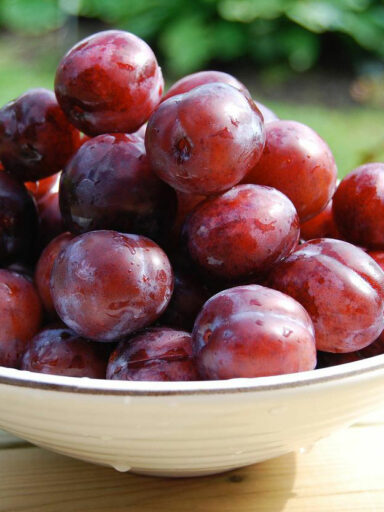The Almond nut which is more of a drupe than a nut is a seed of a tree of the same name. It is closely related to peach, plum, and cherry. It is native to the Middle East, North Africa, and the Indian subcontinent.
As mentioned earlier, the fruit is a drupe with an outer harder shell with the seed within it. The fruit grows to be about one to two inches long. It is brown in color and shaped like a rugby ball. There are usually two types of almonds. These are the sweet and bitter varieties. Commercially the sweet variety is most widely used.
Bitter almonds contain high amounts of cyanide. Cyanide even in small quantities can be lethal to humans and especially little children. It is, therefore, necessary to take precautions when dealing with the bitter variety to ensure it is not ingested in large amounts.
The tree grows to about 4 to 10 meters tall. It takes about three years to reach maturity and to start producing fruit. The fruit usually matures in Autumn after the flowers blossom in Spring. These flowers appear pinkish-white in color. The world’s biggest producers of almonds are the United States, Spain, Australia, Iran, and Morocco among others.
Almond nuts are available in marketplaces all year around. They can be purchased either shelled or unshelled. In either case, they can be salted or sweetened. The almond can also be sold ground in the form of almond flour. When purchasing, one should look for bright-colored shells. They should not show signs of discoloration, mold, bruises, or cracks. They should be firm and not soggy.
Almonds should be stored in a cool, dark, and dry place in an airtight container when shelled. If stored properly they can keep for several months without going bad. Shelled seeds should be stored in a refrigerator in an airtight container as well.
How Almond Nuts are used as Food
The shells can be cracked open using nut shelling tools. They can be eaten raw either salted or sweetened. They can also be roasted or sautéed. Because of their sweet flavor, they are ideal for dessert dishes like ice cream, sundaes, cake, and pie dishes as well as drinks such as almond milkshakes.
Other baked goods that incorporate almonds include biscuits, cookies, and sweets. Chocolate, energy bars, and breakfast cereal dishes also make use of almonds.
With this nut, you can make almond butter as a peanut butter substitute as well as Frangipane. They are also used as an ingredient in savory dishes such as rice preparations, sauces, salad, and vegetable dishes.
Nutritional Benefits
The almond is a rich source of dietary fiber and energy. It contains 579 calories per 100 grams and is rich in carbohydrates and proteins. It is also rich in fats and oils and contains no cholesterol. It is also a gluten-free food.
It is also rich in vitamins and minerals and antioxidants. Almonds are one of the few foods that provide all the nutrient groups essential to good health.
Almonds are a good source of B complex vitamins including folates, niacin, pantothenic acid, pyridoxine, and thiamin. It is a very rich source of riboflavin. Even though is not a source of vitamin A and vitamin C, this nut is packed with vitamin E.
As for minerals, almonds are great sources of potassium, calcium, copper, and iron. It is also rich in magnesium, manganese, phosphorous as well as zinc.



